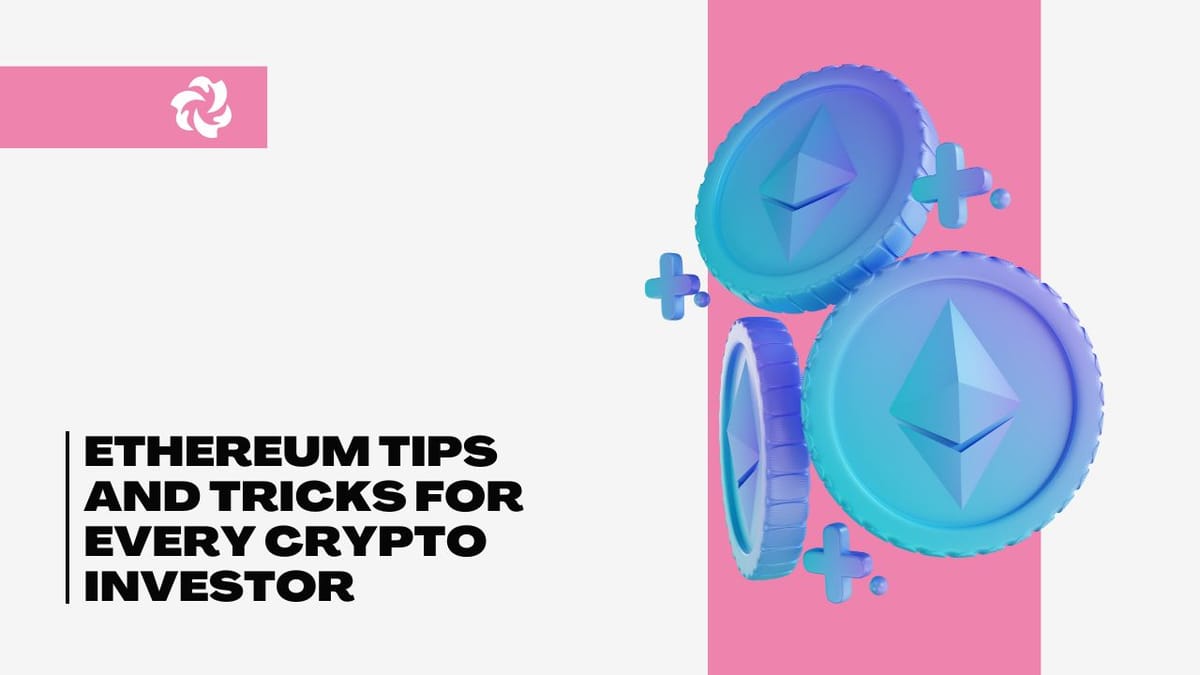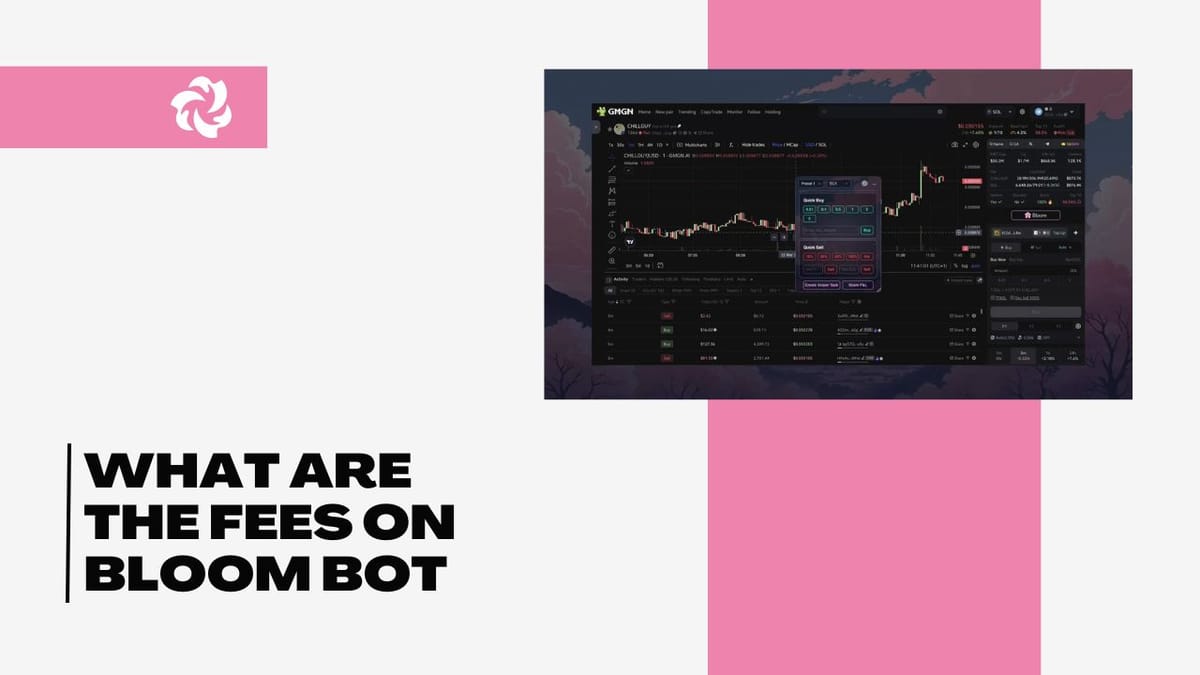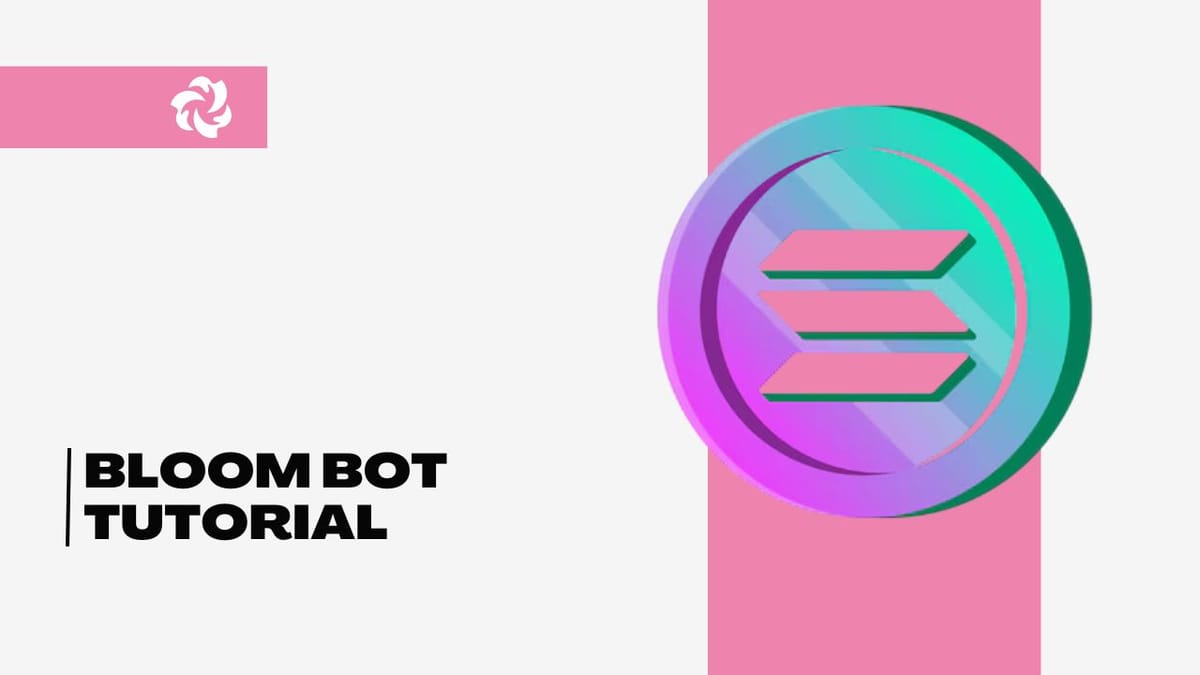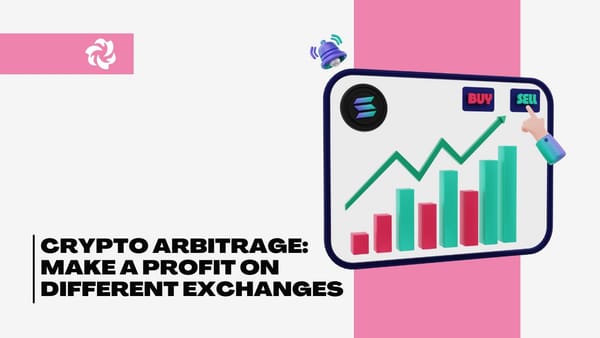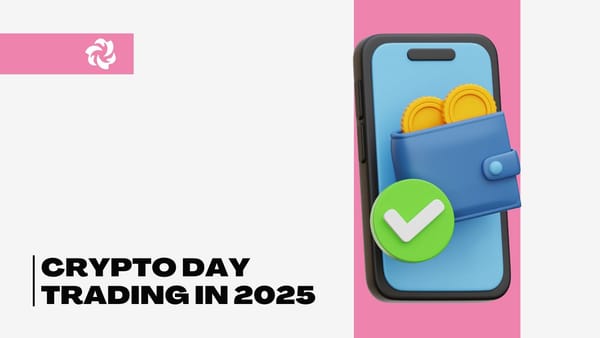Solana Trading For Beginners: Basics, Types, And Strategies
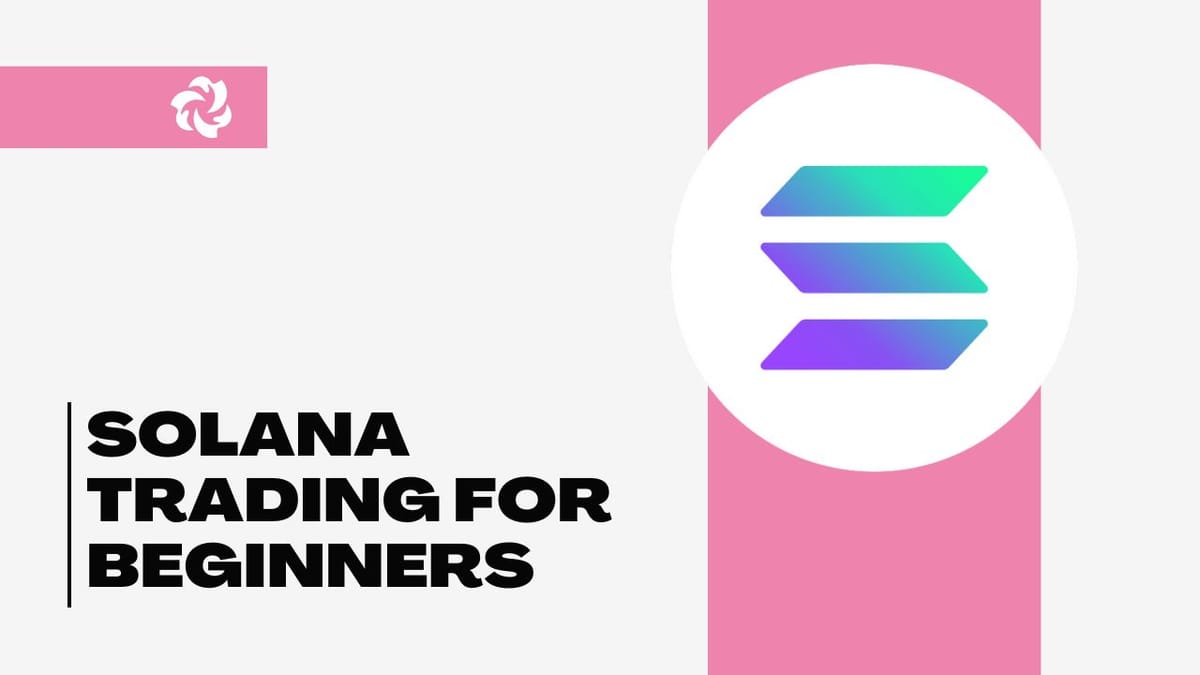
Solana took a huge hit in 2022, losing most of its value after the FTX exchange went down. But guess what? It's bouncing back, big time! A lot of folks are now wondering if it's the right moment to jump in and make some money from Solana's comeback. If that sounds like you, you're in the right place. We've put together a simple guide on how to trade Solana, whether you're looking for quick gains or long-term growth. We'll cover the best ways to trade Solana and even give you some other options in case the market changes. Let's get started on your solana crypto trading journey!
Key Takeaways
- Solana is a super-fast blockchain platform, great for decentralized apps and smart contracts, which is why it's recovering so quickly.
- To start trading Solana, you need an exchange to buy/sell SOL and a secure wallet to store your tokens.
- Breakout trading is a good strategy for Solana; it means trading when Solana's price moves past a key level, often with high volume.
- You can spot breakouts by checking support/resistance levels, looking at charts, and using technical indicators.
- Other ways to trade Solana include range trading, using moving average crossovers, and MACD.
Understanding Solana Crypto Trading

What is Solana?
Solana is a blockchain platform that's been making waves, known for its speed and ability to handle a lot of transactions. It's designed to support decentralized applications (dApps) and make smart contracts easier to use. Think of it as a super-fast, efficient engine for the crypto world.
Solana stands out because:
- It's incredibly fast. Transactions happen in a fraction of a second.
- It can handle a huge number of transactions at once, making it scalable.
- It has strong security measures to protect the network.
These features are why Solana has bounced back, even after some tough times. People are looking at it as a way to potentially make profits in the crypto market. You can find a reliable cryptocurrency exchange to start.
Why Trade Solana?
There are a few good reasons why people are drawn to trading Solana:
- Volatility: Solana can be quite volatile, which means its price can change quickly. This can create opportunities for traders to profit from those price swings.
- Technology: Solana's technology is impressive, and many believe it has a bright future. This belief can drive interest and trading activity.
- Growing Ecosystem: More and more projects are being built on Solana, which can increase demand for SOL, its native token.
Trading Solana, like any cryptocurrency, comes with risks. It's important to do your research and understand what you're getting into before you start trading.
Setting Up for Solana Trading
Before you can start trading Solana, you'll need to get a few things in order:
- Choose a Cryptocurrency Exchange: Find an exchange that allows you to buy, sell, and trade SOL tokens. Popular options include Binance, Kraken, and Coinbase.
- Get a Solana Wallet: You'll need a secure wallet to store your SOL tokens. You can choose a hardware wallet (like Ledger or Trezor) for extra security or a software wallet (like Sollet or Trust Wallet) for convenience.
- Buy SOL Tokens: Once you have a wallet, you'll need to purchase some SOL tokens to start trading. You can use crypto trading strategies to help you decide when to buy and sell.
Solana Breakout Trading Strategy
A breakout happens when a cryptocurrency's price moves beyond a specific level, usually with increased volume. Solana breakout trading is all about spotting and capitalizing on these significant price movements. Basically, you're watching for when Solana's price blasts through a key level, like a resistance or support level.
As a trader, you'll be glued to charts and indicators, trying to predict these potential breakouts. Volume is super important too – a big spike in volume often signals a major breakout is happening.
How to Spot a Breakout
To make money with breakout trading, you gotta learn how to spot a breakout before it's old news. This usually means using a mix of technical analysis, market indicators, and just generally understanding the crypto market.
Here's a quick rundown:
Confirming a SOL Breakout
Okay, so you think you've spotted a breakout. Now what? Don't jump the gun! You need to confirm it. A true breakout should have a few things going for it:
- Increased Volume: This is huge. A real breakout is almost always backed by a surge in trading volume. If the price breaks out but the volume is weak, it could be a fakeout.
- Price Sustained Above/Below the Level: The price needs to stay above the resistance level (for an upward breakout) or below the support level (for a downward breakout) for a certain period. How long? That depends on your trading style, but generally, the longer it holds, the better.
- Technical Indicator Confirmation: Use indicators like the Relative Strength Index (RSI) or Moving Average Convergence Divergence (MACD) to see if they support the breakout. For example, a bullish breakout might be confirmed by the RSI moving into overbought territory.
Mechanics of Breakout Trading
So, you've identified and confirmed a breakout. Time to trade! Here's the basic game plan:
- Entry Point: For an upward breakout, enter a long position once the price breaks above the resistance level and holds. For a downward breakout, enter a short position when the price breaks below the support level and holds.
- Stop-Loss Placement: This is crucial for managing risk. Place your stop-loss order just below the resistance level (for a long position) or just above the support level (for a short position). This limits your potential losses if the breakout fails.
- Profit Target: Set a profit target based on the size of the breakout. A common approach is to measure the distance between the support and resistance levels and then project that distance upward (for a long position) or downward (for a short position) from the breakout point.
Breakout trading can be a really profitable strategy because breakouts often kick off big price swings and major trends. But remember, it's not foolproof. Fakeouts happen, so always use stop-losses and manage your risk carefully.
Identifying Solana Breakouts
Understanding the Basics of Breakouts
Okay, so first things first, you gotta know what a breakout actually is. It's when the price of Solana moves past a key level of support or resistance. Think of support as a floor – the price usually bounces off it. Resistance is like a ceiling – the price struggles to go above it. When the price smashes through either of these, that's your breakout. It suggests the price might be heading in that direction for a while.
Analyzing Price Charts for Breakouts
Looking at charts is super important. You're trying to spot patterns that show a potential breakout is brewing. For example:
- Consolidation: The price is moving sideways in a tight range. This can mean it's building up energy for a big move.
- Increasing Volume: If you see the trading volume going up as the price approaches a support or resistance level, that's a good sign that the breakout might be real.
- Trendlines: Draw lines connecting the highs or lows of the price. A break above a downtrend line or below an uptrend line can signal a change in direction.
Basically, you're looking for clues that the price is about to make a significant move. It's not always obvious, but with practice, you'll get better at spotting them.
Using Technical Indicators for Breakouts
Technical indicators can help confirm what you're seeing on the price chart. Here are a couple to consider:
- Volume: A surge in volume during a breakout suggests strong conviction behind the move.
- Moving Averages: Look for price to break above or below key moving averages. This can signal a change in trend.
- MACD: A crossover of the MACD line and the signal line can indicate a potential breakout. A bullish crossover suggests an upward breakout, while a bearish crossover suggests a downward breakout.
Other Solana Trading Strategies
Range Trading
Range trading is all about spotting when Solana's price bounces between two levels: a high (resistance) and a low (support). The idea is to buy near the support and sell near the resistance. It's like playing ping pong with the price. You're betting that the price will stay within this range for a while. This strategy works best when the market isn't trending strongly in either direction.
Moving Average Crossovers
Moving average crossovers involve using moving averages (MAs) to identify potential buy and sell signals. A moving average smooths out price data over a specific period, like 50 days or 200 days. When a shorter-term MA crosses above a longer-term MA, it's often seen as a bullish signal, suggesting it might be time to buy. Conversely, when the shorter-term MA crosses below the longer-term MA, it's a bearish signal, hinting at a potential sell-off. It's a pretty common way to try and catch trends early. You can explore leading DeFi dApps on Solana to implement this strategy.
MACD (Moving Average Convergence Divergence)
The Moving Average Convergence Divergence (MACD) is a momentum indicator that shows the relationship between two moving averages of a security’s price. It consists of the MACD line, the signal line, and a histogram. Traders look for crossovers of the MACD line above or below the signal line to identify potential buy or sell signals. Divergence between the MACD and the price action can also provide clues about potential trend reversals. It's a bit more complex than simple moving averages, but it can give you a better sense of the market's momentum.
It's important to remember that no trading strategy is foolproof. Market conditions can change quickly, and what works today might not work tomorrow. Always do your own research and manage your risk carefully.
Advanced Solana Trading Techniques
Inter-Exchange Arbitrage
Inter-exchange arbitrage is all about exploiting price differences for the same asset across different exchanges. The core idea is to buy Solana on an exchange where it's cheaper and simultaneously sell it on another where it's more expensive. This can be tricky, though, because you need to act fast to take advantage of fleeting price discrepancies. Transaction fees and withdrawal times can eat into your profits, so you have to factor those in.
Leveraging Volatility in Solana Trading
Solana, like many cryptocurrencies, can be quite volatile. This volatility, while risky, also presents opportunities for profit. One way to take advantage of this is through options trading, where you can bet on the direction of Solana's price movement without actually owning the asset. Another approach is to use leveraged trading, which amplifies both your potential gains and losses. Just remember, high volatility means high risk, so proceed with caution. Consider using Solana trading bots to automate your trades and react quickly to market changes.
Risk Management in Advanced Strategies
Advanced trading strategies often come with increased risk, so solid risk management is essential. Here are a few things to keep in mind:
- Stop-loss orders: Always use stop-loss orders to limit your potential losses. This is especially important when using leverage.
- Position sizing: Don't put all your eggs in one basket. Diversify your portfolio and avoid over-leveraging any single trade.
- Stay informed: Keep up-to-date with the latest news and developments in the Solana ecosystem. Market sentiment can change quickly, so it's important to stay ahead of the curve.
It's easy to get caught up in the excitement of advanced trading, but it's important to remember that risk management is just as important as profit potential. Always prioritize protecting your capital, and never trade with money you can't afford to lose.
Benefits of Solana Breakout Trading

High Profit Potential
Breakout trading offers the potential for substantial gains by capitalizing on significant price movements. When the price of Solana breaks through major resistance or support levels, traders can enter positions to profit from the ensuing trend. Ideally, aim for profit targets that are at least twice the size of your stop loss. This approach allows for a favorable risk-reward ratio, where a single successful trade can offset multiple unsuccessful ones.
Filtering Market Noise
Breakout trading helps filter out market noise by focusing on significant price movements. Instead of getting caught up in minor fluctuations, traders concentrate on major trends, minimizing the impact of short-term volatility on their trading decisions. This focused approach can lead to more disciplined and effective trading.
Applicability to Other Assets
One of the great things about breakout trading is that it's not just for Solana. Once you understand how to trade Solana using this strategy, you can apply that knowledge to trade other cryptocurrencies and assets. The principles of identifying breakouts, confirming signals, and managing risk are universal, making it a versatile tool for any trader.
Breakout trading provides defined entry and exit points, making it easier to plan trades and manage risk effectively. Traders can enter the market at breakout points and place stop losses to limit potential losses. This structured approach enhances risk management and improves overall trading discipline.
Managing Risks in Solana Trading
Trading Solana, like any cryptocurrency, comes with inherent risks. It's important to understand and manage these risks to protect your capital and improve your chances of success. Let's explore some key strategies for risk management in Solana trading.
Understanding Fake Breakouts
Fake breakouts, also known as false breakouts, are a common trap for traders. They occur when the price appears to break through a resistance or support level, enticing traders to enter positions, only to reverse direction shortly after. Identifying these fakeouts is crucial to avoid losses.
Here's how to spot them:
- Low Volume: A genuine breakout is usually accompanied by a significant increase in trading volume. If the volume is low, it could be a sign of a weak or fake breakout.
- Lack of Confirmation: Wait for the price to sustain its movement above the resistance or below the support level for a certain period (e.g., a few hours or a day) before considering it a valid breakout.
- Retest Failure: A true breakout often involves a retest of the broken level, which then acts as a new support (for resistance breakouts) or resistance (for support breakouts). If the price fails to hold during the retest, it could be a fakeout.
Placing Stop Losses Effectively
Stop-loss orders are an essential tool for managing risk. A stop-loss order automatically closes your position when the price reaches a specified level, limiting your potential losses. Placing stop losses correctly can be tricky, but here are some guidelines:
- Identify Key Levels: Place your stop loss below a recent swing low (for long positions) or above a recent swing high (for short positions). These levels often act as areas of support or resistance.
- Consider Volatility: Adjust your stop-loss distance based on the volatility of Solana. More volatile assets require wider stop losses to avoid being prematurely stopped out by normal price fluctuations.
- Don't Be Too Tight: Avoid placing your stop loss too close to your entry price, as this increases the likelihood of being stopped out by minor price movements. Give your trade some room to breathe.
Capital Management for Solana Crypto Trading
Effective capital management is the cornerstone of successful trading. It involves allocating your capital wisely and limiting the amount you risk on each trade. Here are some key principles:
- Risk Percentage: Never risk more than a small percentage of your trading capital on a single trade. A common rule of thumb is to risk no more than 1-2% of your capital per trade. This helps to protect your account from significant losses during losing streaks.
- Position Sizing: Calculate your position size based on your risk percentage and the distance between your entry price and stop-loss level. This ensures that you're only risking the predetermined percentage of your capital. Dynamic position sizing can be a good strategy.
- Diversification: While focusing on Solana, consider diversifying your portfolio with other cryptocurrencies or assets to reduce overall risk. Don't put all your eggs in one basket.
Remember, trading involves risk, and it's possible to lose money. Never trade with money you can't afford to lose, and always do your own research before making any investment decisions. A solid stop loss to limit potential losses is a must.
Conclusion
So, we've gone over a bunch of ways to trade Solana. It's a pretty active market, and there are lots of chances to make some gains. Things like breakout trading are good for when SOL is really moving. But don't forget about other methods too, like MACD, range trading, or even looking at moving averages. Mixing and matching these can help you deal with different market situations. The main thing is to keep learning and adjusting. That's how you get ahead in the Solana market.
Frequently Asked Questions
What exactly is Solana?
Solana is a super-fast blockchain platform, kind of like a digital highway, built for quick transactions and complex smart contracts. It's known for its incredible speed, ability to handle lots of transactions, and strong security.
How do I get started with Solana trading?
You can trade Solana (SOL) on many crypto exchanges like Binance, Kraken, and Coinbase. You'll also need a secure digital wallet (like Ledger or Sollet) to store your SOL tokens. After setting up, you can buy SOL and start trading.
What is a Solana breakout?
A 'breakout' happens when Solana's price moves past a key level, like a resistance point, often with a lot of trading activity. It's like the price breaking out of a box. This can signal a big price move is coming.
How can I tell if a Solana breakout is happening?
To spot a breakout, you look at price charts and use tools called technical indicators. You also pay attention to 'support' (where prices tend to stop falling) and 'resistance' (where prices tend to stop rising). A breakout happens when the price pushes through these levels.
Are there other ways to trade Solana?
Besides breakout trading, you can try 'range trading' (buying low and selling high within a set price range), 'moving average crossovers' (using lines on a chart to predict price changes), and 'MACD' (another tool for spotting trends).
How do I protect my money when trading Solana?
To manage risks, always be aware of 'fake breakouts' (when the price breaks out but quickly falls back). Use 'stop losses' to automatically sell your tokens if the price drops too much, and always manage how much money you put into each trade.
Check Bloom Bot latest guides:

